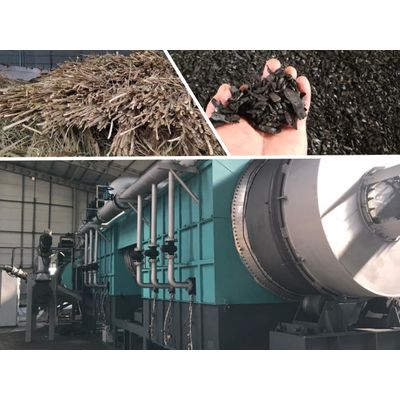

- Home
- Companies
- Beston Group Co., Ltd.
- Articles
- What Biomass Options Are Currently ...

What Biomass Options Are Currently Being Explored for Carbonization?
When it comes to the intriguing world of carbonization, one might think that it's all about the process itself. While that's undoubtedly important, the choice of feedstock is a game-changer that can shape not only the performance but also the end products of a carbonization system. Many biomass materials can be used to make charcoal, like coconut shells, fruit husks, and bagasse, as well as some lesser-known heroes like empty fruit bunch (EFB) and palm shells. Let's not forget the diverse potential hidden within bamboo, sawdust, wood chips, straw, rice husks, and elephant grass either.
What is Carbonization?
Carbonization, for the uninitiated, is the process of converting organic materials into carbon-rich products through pyrolysis, typically in an oxygen-starved environment. This seemingly magical transformation results in a range of valuable outputs, including biochar, activated carbon, and syngas.
But what sets the stage for this alchemical journey? It's the choice of feedstock – the raw material that feeds the carbonization beast. Let's dive into the carbonization machine to understand how the choice of feedstock shapes the brew.
The Classics: Coconut Shells, Fruit Husks, and Bagasse
Coconut shells, like the proverbial jack-of-all-trades, are prized for their versatility. They're carbonization gems, yielding high-quality biochar and activated carbon. Their dense structure and high carbon content make them a preferred choice. Plus, coconut shells are abundant in tropical regions, turning waste into treasure.
Fruit husks come in an array of varieties, including those from coconuts, almonds, and even coffee beans. They share a common trait: they're rich in lignin, a key player in carbonization. Lignin-rich feedstocks generally produce biochar with excellent structural stability.
Bagasse, the pulpy residue left after squeezing the juice out of sugarcane or agave, is no underdog either. It's an intriguing feedstock because of its abundance and potential for carbon-rich products. In regions with a thriving sugarcane industry, bagasse can be the golden ticket to sustainable carbonization.
Palm Paradise: EFB and Palm Shells
Empty fruit bunch (EFB) and palm shells hail from the palm tree family, and they are making waves in the carbonization world. EFB, which is the discarded bunch of fruit that remains after palm oil extraction, is known for its high cellulose content. Palm shells, the hard, outer layer of the palm fruit, offer a rich source of lignin. Together, they create a dynamic duo for carbonization, providing a diverse range of raw materials.
The strength of palm-based feedstocks lies in their abundant availability in palm-growing regions. Their combination enables a versatile production of biochar and activated carbon, catering to various industrial needs.
Timber Talk: Bamboo, Sawdust, and Wood Chips
Bamboo, the fast-growing giant of the grass family, is more than just panda food. It's a remarkable feedstock, packed with cellulose and hemicellulose, making it a prime candidate for carbonization. Its rapid growth ensures a sustainable supply of raw material, and its potential is still being explored.
Sawdust and wood chips, often residues from the timber industry, are well-known in the carbonization game. Their lignocellulosic structure lends itself to the production of high-quality biochar and activated carbon. Plus, they provide a sustainable use for wood waste, promoting a circular economy.
Cereal Stars: Straw, Rice Husks, and Elephant Grass
Straw, an agricultural byproduct, and rice husks are rich in silica. While silica isn't a typical star in the carbonization show, it adds unique properties to the produced biochar. This can be advantageous for specific applications, such as soil conditioning.
Elephant grass, a high-yield, fast-growing grass, is gaining attention for its potential as a feedstock. It's a sustainable option for regions where it thrives, contributing to eco-friendly carbonization solutions.
Exploring the Future
The beauty of feedstock selection is its adaptability. Different feedstocks offer unique advantages, depending on the end products and the environmental context. Researchers and innovators are continuously exploring new feedstock options, seeking to unlock the full potential of carbonization.
In the quest for sustainable solutions, unconventional feedstocks like agricultural waste, algae, and even sewage sludge are being investigated. These not only divert waste from landfills but also generate valuable carbon-rich materials.
